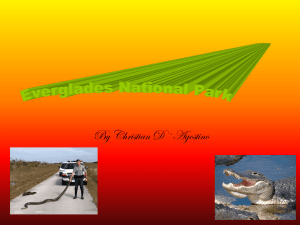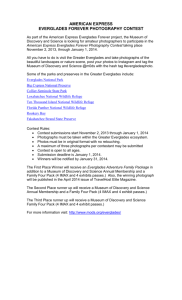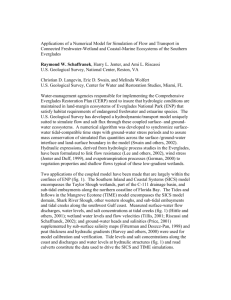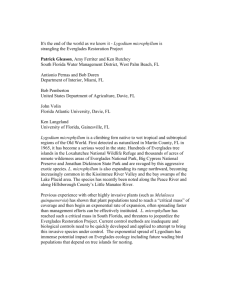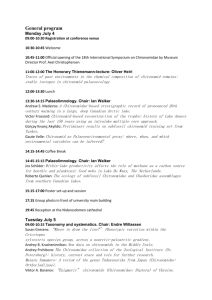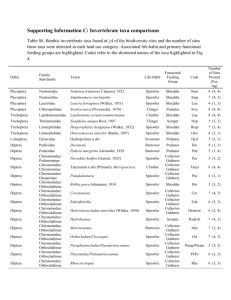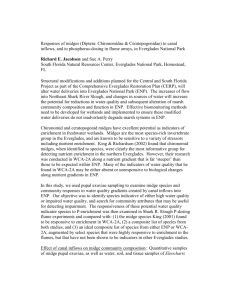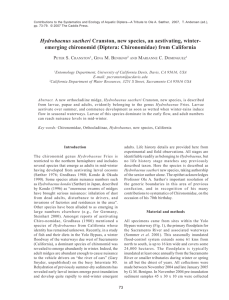A preliminary list of Chironomidae in Everglades National Park
advertisement
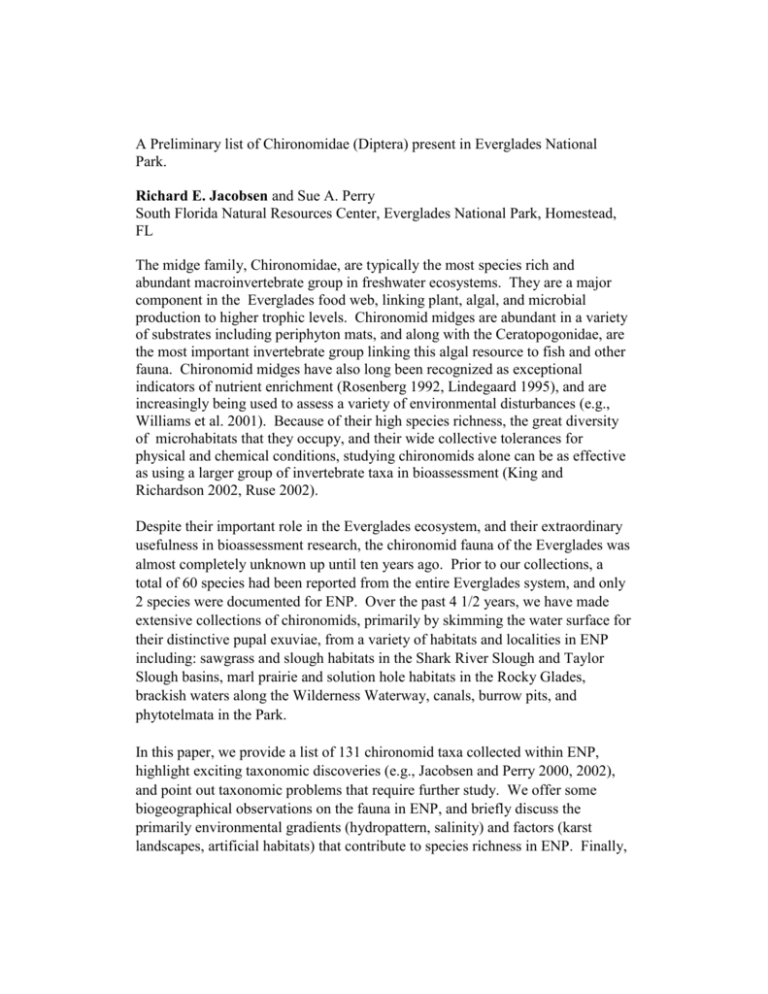
A Preliminary list of Chironomidae (Diptera) present in Everglades National Park. Richard E. Jacobsen and Sue A. Perry South Florida Natural Resources Center, Everglades National Park, Homestead, FL The midge family, Chironomidae, are typically the most species rich and abundant macroinvertebrate group in freshwater ecosystems. They are a major component in the Everglades food web, linking plant, algal, and microbial production to higher trophic levels. Chironomid midges are abundant in a variety of substrates including periphyton mats, and along with the Ceratopogonidae, are the most important invertebrate group linking this algal resource to fish and other fauna. Chironomid midges have also long been recognized as exceptional indicators of nutrient enrichment (Rosenberg 1992, Lindegaard 1995), and are increasingly being used to assess a variety of environmental disturbances (e.g., Williams et al. 2001). Because of their high species richness, the great diversity of microhabitats that they occupy, and their wide collective tolerances for physical and chemical conditions, studying chironomids alone can be as effective as using a larger group of invertebrate taxa in bioassessment (King and Richardson 2002, Ruse 2002). Despite their important role in the Everglades ecosystem, and their extraordinary usefulness in bioassessment research, the chironomid fauna of the Everglades was almost completely unknown up until ten years ago. Prior to our collections, a total of 60 species had been reported from the entire Everglades system, and only 2 species were documented for ENP. Over the past 4 1/2 years, we have made extensive collections of chironomids, primarily by skimming the water surface for their distinctive pupal exuviae, from a variety of habitats and localities in ENP including: sawgrass and slough habitats in the Shark River Slough and Taylor Slough basins, marl prairie and solution hole habitats in the Rocky Glades, brackish waters along the Wilderness Waterway, canals, burrow pits, and phytotelmata in the Park. In this paper, we provide a list of 131 chironomid taxa collected within ENP, highlight exciting taxonomic discoveries (e.g., Jacobsen and Perry 2000, 2002), and point out taxonomic problems that require further study. We offer some biogeographical observations on the fauna in ENP, and briefly discuss the primarily environmental gradients (hydropattern, salinity) and factors (karst landscapes, artificial habitats) that contribute to species richness in ENP. Finally, we provide an updated total, and a projected estimate, of the total invertebrate species richness in the Everglades system based upon integrating : (1) our collections of Diptera from ENP [190 species], (2) records of Copepoda collected in ENP by Dr. M. Cristina Bruno [38 specie ], and (3) the extensive list of invertebrates collected by King (2001) from WCA-2A [approx. 270 species]. Literature Cited Jacobsen, R. E. and S. A. Perry. 2000b. A review of Beardius Reiss & Sublette, with description of a new species from Everglades National Park, Florida (Insecta, Diptera, Chironomidae). Spixiana 23: 129-144. Jacobsen, R. E. and S. A. Perry. 2002. A new species of Manoa (Diptera:Chironomidae) from Everglades National Park. JNABS 21: 314-325. King, R. S. 2001. Dimensions of invertebrate assemblage organization across a phosphorus-limited Everglades landscape. Ph.D. Dissertation, Duke University, 356 pp. King, R. S. and C. J. Richardson. 2002. Evaluating subsampling approaches and macroinvertebrate taxonomic resolution for wetland bioassessment. JNABS 21:150-171. Lindegaard, C. 1995. Classification of water-bodies and pollution. Pp. 385-404 In: P. D. Armitage, P. S. Cranston, and L. C. V. Pinder (eds.), The Chironomidae: Biology and ecology of non-biting midges, Chapman and Hall, London. Rosenberg, D. M. 1993. Freshwater biomonitoring and Chironomidae. Netherlands Journal of Aquatic Ecology 26: 101-122. Williams, D. D., A. I. Nesterovitch, A. F. Tavares, and E. G. Muzzatti. 2001. Morphological deformities occurring in Belarusian chironomids (Diptera: Chironomidae) subsequent to the Chernobyl nuclear disaster. Freshwater Biology 46: 503-512. Richard E. Jacobsen, South FL Natural Resources Center, 40001 State Rd 9336, Homestead, FL, 33034, Phone: 305-242-7800, Fax:305-242-7836, rick_jacobsen@nps.gov.
